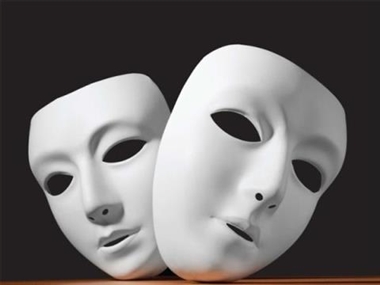Jalal tehrani
We’re used to seeing new experiences from the “Bazi Theatre Group”.
I always looked up to their work with excitement and we’ve learned a lot from them.
We’ve experienced many different means of communication with this group. From the set design and its coordination with the audience to the issues of the play, the language, the time  and even the set equipment and the way they looked; down to the use of every little thing to perfection.
and even the set equipment and the way they looked; down to the use of every little thing to perfection.
This group would use everything they had to its core and sometimes even mastered some things.
Sometimes they experienced language, sometimes being speechless and sometimes they experienced religion.
And from each experience, they learned something valuable. We also learned from them.
And it’s obvious that this amount of experience sometimes made them let go of the theater aspect. Or contrary to that, the theatre was more for the future than current audiences.
But we still remember the fact that a play reaches the audience at the end. But only focusing on the entire play also moves away from its meaning, let alone the abstraction of it all.
Because, if I’m not wrong, all of these tools have to transfer some sort of feeling, meaning, a message or something to you. Whatever the message is supposed to be; even if it’s no message at all! Because “nothingness” was said and accepted in the mid twentieth century.
But this type of emptiness is different from that emptiness. That is, that here, it’s not completely empty. It is “something” but incomplete. Or even genius!
Furthermore, it’s the summary of experiences; important ones at that.
The play: “Tabar-e-khoon” is an adaptation of “Lirshah”
Based on expectation, this play takes full advantage of the components of the scene. The performance is intense and harmonious. It goes fast and leaves no room for extra. It’s full of creativity and intelligence. And of course experiences. The acting is always eye-catching.
Enough of the play. because it has to be seen.
But something that’s barely seen in our theatre today, is a familiar take on a non-Iranian play. “Tabar-e-khoon” could’ve been a turning point.
We all have a point of view. But usually, we take a look at a western work of art and we get intimidated.
We either try to expand our point of view, and desolve ourselves in their world, Or, we get so lost in their work that we can't even estimate its value.
We might also tip our hats or show respect to the magnificent work of art. We then import the work to our own culture, but even then we tear it apart. It's only natural though.
but “Tabar-e-khoon” which is the result of the mental digestion of “Bazi Theater Group” from “Lirshah”, tells us that we don't need to go that far to reach the real meaning of national theater.
To perform a national play, you do not need to look for old texts and try to cover the old traditions loosely for your characters and think of preserving your nationality. you mix everything up.
“Tabar-e-khoon” goes even further than this. This play defamiliarizes.
It has turned Shakespeare into a medium and it says what it wants to say.
And it doesn't reference “Lirshah '' anywhere. The only similarity is the name ‘Mirshah” to that deceased person. And that sometimes makes your mind slip.
But this play has an open ending right at the second half! In this half, Mirshah, Talkhak and Tala (young girl) tell the same story three times. Each from a different point of view. Getting more beautiful as they go on.but the endings have big differences. At the end of each story, one of the three main characters gets killed as the narrator explains.
As it seems, from a certain point on, the writer and the director are separated from one another. (although they are the same person). And acting has taken an upper hand from the text.
I guess anyone might have been tempted to do this if they also found that corpse under the stage and had to face the beauty and suspense of such a mystery.
But “Lirshah” and other famous plays, make things clear. the writer always has three or more choices.


